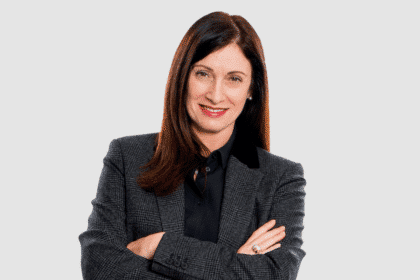Spotify’s head of sales ANZ has told B&T that the growth in interest for audio advertising has come after the industry started to nail its measurement and effectiveness metrics.
“We know that one major challenge the industry is facing is being able to adequately measure results and track effectiveness and I think podcast advertising is really delivering against this now, with creative performance metrics, confirmed ad impressions and a deep understanding of the audience listening being part of the norm at Spotify,” said Adrian Bingham.
Audio advertising has been one of the most talked-about topics in the industry this year with IAB Australia recently holding its Audio Summit, PWC reporting that audio ad spend would climb by more than $200 million this year and 71 per cent of media agencies saying that they would increase audio streaming investment.
“Something not completely new but is a growing trend we are also seeing, is a shift to planning and buying media based on attention and engagement of a target audience. Podcasts are perfectly positioned as a channel to deliver on this for advertisers,” added Bingham.
In fact, Spotify can now offer verified demographic and audience segments at scale via Nielsen, explained Bingham and, as a result, the company has become one of the largest advertising networks in Australia.
The company also offers call-to-action cards, powered by Spotify’s Streaming Ad Insertion (SAI) technology and are designed to be seen while a brand’s ad is playing and after an ad has been heard.
With this tech advertisers can see impression-level campaign performance and insights, explained Bingham.
“We have run campaigns recently with clients such as L’Oreal CeraVe and our original podcast, The Inspired Unemployed, with the click through rate from CTA cards delivering six times our benchmark,” he added.
“We measure success at Spotify with Reach, Reaction & Resonance and can provide clients with detailed analytics and performance metrics, including first-party and third-party measurement solutions across the full funnel.”
However, while Spotify saw faster revenue growth in the first quarter of this year compared to the prior three quarters, the company missed its revenue and earnings growth estimates.
What’s more, the company’s ad-supported gross margin declined by three per cent in the first quarter — with Spotify saying that the trend “reflects improving ad-supported music and podcast profitability, offset by higher other cost of revenue.”
In fact, Spotify also revealed that it would end exclusivity on its Gimlet original podcasts, offering them on different streaming services, as well.
“Given our position as the leading global podcast platform, we are expanding our windowing strategies to increase the audiences and ad sales potential of our shows. In this case, we’re pursuing broad distribution for some of our original podcasts like Science Vs. This will be done on a case-by-case basis and over time,” said the company in a statement.
“Our approach to selling these podcasts will not change while advertisers will benefit from additional audience reach,” added a Spotify spokesperson.
Of course, the fact remains that, as Bingham put it, “you’re connecting with people as they stream what they love, choosing this based on their mood or moment.”
And, Bingham said that the company had worked on new methods to ensure that ad performance is transparent.
“Our products are designed to ensure we deliver precision and transparency for our clients, which is why innovations such as Spotify’s SAI really changed the game in our opinion. Advertisers can validate impressions in real-time, as listeners stream their podcasts on Spotify. SAI unlocks digital planning, reporting, and measurement for podcasts – providing campaign metrics and audience insights based on confirmed ad impressions,” he explained.
Audio and podcast advertising still has a way to go but, at Spotify, it seems as though the company is setting its advertisers up for success.








